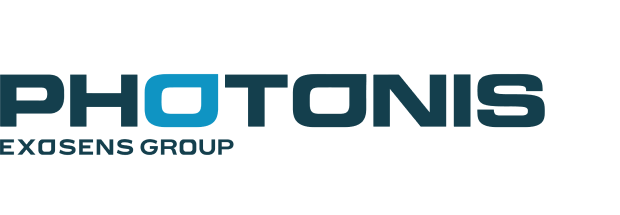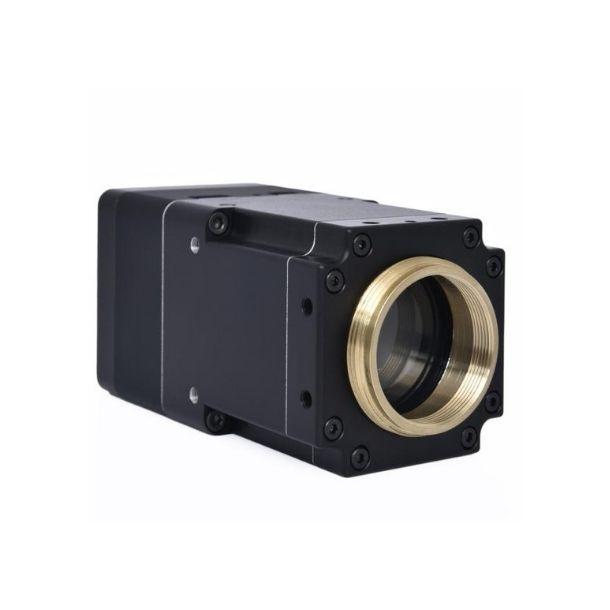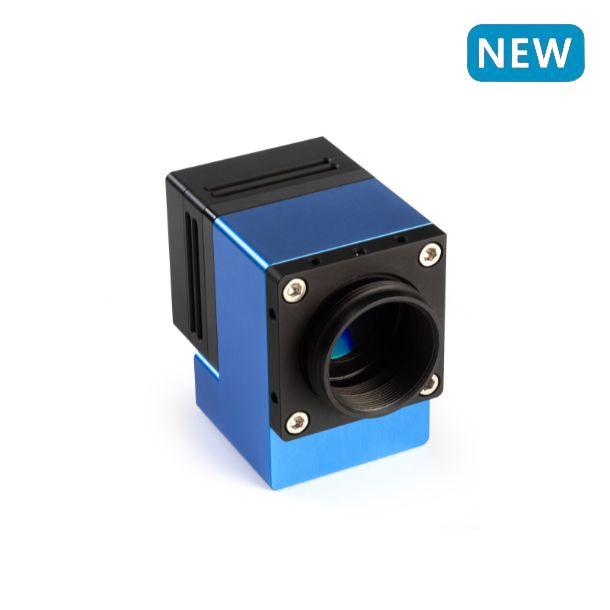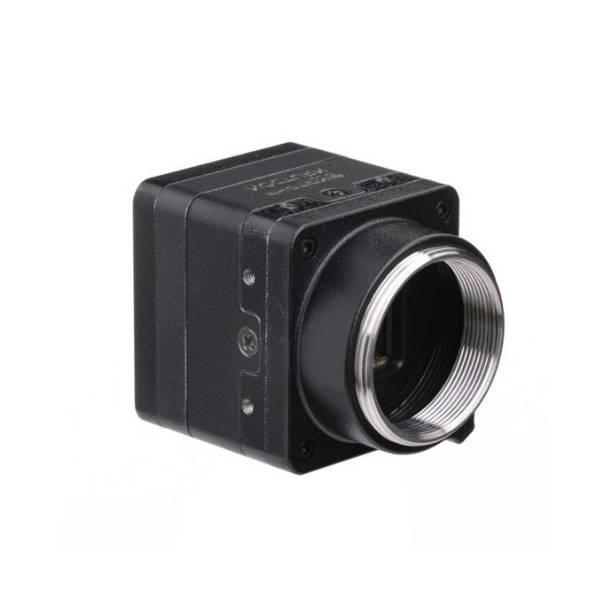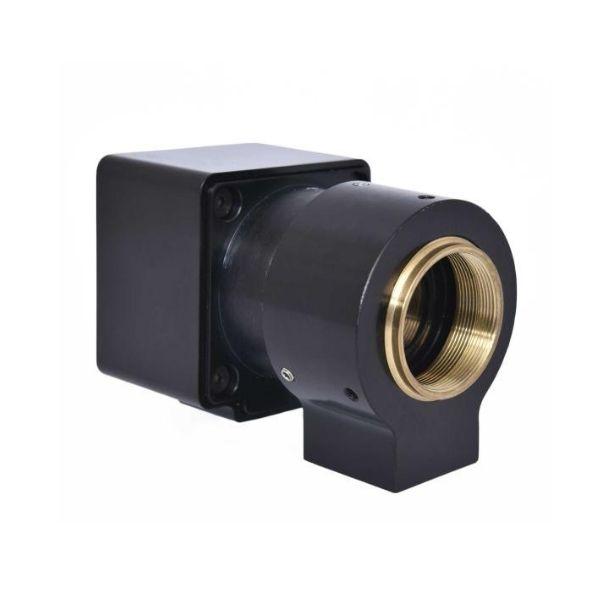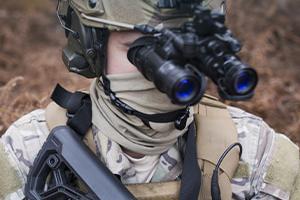Photonis, part of Exosens, range of Visible - Near Infrared (VIS/NIR) cameras and cores provide color or monochrome real-time imaging capabilities from daylight to overcast starlight in the visible and near infrared spectrum. The camera cores are based on sensitive CMOS sensors and image intensifier tubes covering different ranges of illumination.
Our low-light camera cores feature high-definition resolution, high sensitivity and high dynamic range with low power consumption and are built in ruggedized housings. Their compact size makes these camera modules ideal for integration into aerial, mobile and hand-held surveillance systems. Optimized for size, weight and power (SWaP) requirements, the low-light camera cores are also a well-suited imaging solution for man-portable uses such as weapon sights, helmet displays, and monoculars.
Our Intensified cameras (iCameras) combine CMOS sensors and image intensifier tubes making use of the best of both technologies for ultra-sensitive imaging under overcast illumination conditions. The iCameras feature high-resolution, high frame rate and a very compact design making them suitable for industrial and research markets.
Both low-light cameras and iCameras are meant for demanding OEMs/integrators who seek sensitive or ultra-sensitive imaging solutions for their current systems and for end-users in the industrial and scientific community who can take advantage of plug & play feature.
Our Visible - Near Infrared (VIS/NIR) cameras and cores provide color or monochrome real-time imaging capabilities from daylight to overcast starlight in the visible and near infrared spectrum. Explore further below to learn more about nir camera technology, benefits, and our cutting-edge solutions:
- Learn more about visible - near Infrared cameras
- Exploring visible technology
- Discover our ultra violet cameras
- Discover our long wave infrared cameras
- Exploring ultra violet technology
- Read the article sensor-based food inspection and sorting
- Read more about Photonis brand
Need some answers? Ask our experts!
Contact usFrequently asked questions
What is a low-light camera?
A low-light camera is a type of digital camera specifically designed to capture high-quality images or video in a very low illumination conditions, where regular cameras may struggle to produce clear and detailed images.
How sensitive is Photonis’ camera?
The Photonis low light camera can produce a high quality image with a very low dark condition up to Night Level 3 or Quarter moonlight condition (10 mlx). In addition, the Photonis intensified camera is able to capture a high quality image with an overcast starlight condition or Night Level 5 (0.7 mlx)
Can Photonis low-light camera capture color images in the dark?
Certainly! Photonis low-light cameras are capable of capturing color images in low-light conditions. It utilizes advanced image processing to maintain color accuracy in low-light settings. Improving the experience to see the color during night.
About visible - Near infrared cameras
Visible and Near Infrared (VIS/NIR) technology has rapidly evolved to encompass a broad spectrum of applications, from military and surveillance to industrial and scientific endeavors. At the forefront of this advancement is Photonis, a division of Exosens, renowned for its expertise in visible technology and commitment to delivering cutting-edge solutions.
Photonis' Visible and Near Infrared (VIS/NIR) cameras and cores offer unparalleled imaging capabilities across varying light conditions, from bright daylight to dimly lit environments. These camera cores, featuring sensitive CMOS sensors and image intensifier tubes, cater to a diverse range of industries and applications, providing real-time color or monochrome imaging with high-definition resolution and exceptional sensitivity.
In the realm of low-light imaging, Photonis excels with its innovative camera cores designed to operate efficiently in challenging lighting conditions. These cores, characterized by their compact size, ruggedized housing, and low power consumption, are ideal for integration into aerial, mobile, and hand-held surveillance systems. Whether deployed for military operations or scientific research, Photonis' low-light camera cores deliver unmatched performance and reliability.
Moreover, Photonis' intensified cameras, known as iCameras, represent a fusion of advanced technologies aimed at pushing the boundaries of visible technology further. By combining CMOS sensors with proprietary image intensifier tubes, these cameras offer ultra-sensitive imaging capabilities, particularly in overcast illumination conditions. With high-resolution imagery and impressive frame rates, the iCameras cater to diverse industrial and research applications, setting new standards in visible technology. Photonis’ iCMOS is such an example that provides the benefits and features mentioned above.
Photonis' advanced camera systems are equipped with a versatile range of filters, allowing users to precisely control the wavelengths captured in each photo, ensuring accurate analysis across a broad spectrum of applications.
With a wide dynamic range and customizable filter options, Photonis' cameras are capable of capturing high-quality photos across various lighting conditions, providing unparalleled flexibility for demanding imaging tasks.
For example, the Nocturn Series of low light camera cores provide day-through-night imaging, capturing images in extreme lighting conditions from daylight through starlight condition. Nocturn Series is ruggedized, making them ideal for surveillance, security, and mobile applications such as border patrol, reconnaissance UAVs and armored vehicle perimeter monitoring. Optimized for size, weight and power (SWaP) requirements, the Nocturn Series is also a well-suited imaging solution for man-portable uses such as weapon sights, helmet displays, and monocular.
Photonis' expertise extends beyond camera cores to encompass image intensifier tubes, which play a pivotal role in night vision applications. Utilizing vacuum tube-based technology, Photonis' image intensifier tubes amplify incoming light signals, enabling enhanced visibility in low-light environments. This innovative approach to night vision technology has positioned Photonis as a leader in the field, with solutions tailored for military, space, and commercial applications.
In the pursuit of innovation, Photonis remains committed to advancing visible technology, continually exploring new avenues and applications. With a focus on performance, reliability, and versatility, Photonis' solutions empower industries and researchers to achieve their goals with unparalleled precision and efficiency.
As the world of visible technology continues to evolve, Photonis stands at the forefront, driving progress and shaping the future of imaging and surveillance. With its unwavering dedication to excellence, Photonis remains a trusted partner for OEMs, integrators, and end-users alike, providing transformative solutions that redefine what's possible in the realm of visible and near-infrared imaging.
Photonis' Visible and Near Infrared (VIS/NIR) technology is not only adept at capturing visual information but also excels in thermal imaging, providing valuable insights for a myriad of applications, including surveillance, inspection, and scientific research. By utilizing specialized filters, Photonis' cameras can selectively capture specific wavelengths of light, enabling precise analysis of thermal data and detection of temperature variations beyond the human eye's capabilities.
In industrial settings, where precision is paramount, Photonis' cameras equipped with thermal imaging capabilities play a crucial role in quality control and inspection processes. These cameras, featuring advanced optical lenses and image processing algorithms, can detect minute differences in thermal signatures, allowing for early detection of anomalies or defects in objects under scrutiny. Whether used for comparing thermal profiles or monitoring thermal trends over time, Photonis' thermal imaging solutions deliver unmatched speed and accuracy, facilitating informed decision-making and optimizing operational efficiency.
Moreover, Photonis' expertise in optical science extends beyond visible and thermal imaging to encompass video modes tailored for specific applications. Whether it's high-speed video capture for analyzing fast-moving objects or multispectral video for comprehensive data collection, Photonis' cameras offer versatility and precision required in diverse scientific and industrial settings.
In the realm of security and surveillance, Photonis' cameras equipped with infrared (IR) capabilities provide enhanced visibility in low-light conditions, enabling reliable detection and identification of objects and individuals. By leveraging IR technology, Photonis' cameras can penetrate darkness and overcome environmental obstacles, ensuring continuous monitoring and surveillance, day or night.
Furthermore, Photonis' commitment to innovation extends to its ongoing research and development efforts aimed at advancing visible and infrared imaging technologies. By staying at the forefront of scientific advancements, Photonis continues to push the boundaries of what's possible, driving progress in optical science and paving the way for new applications and discoveries.
Photonis' Visible and Near Infrared (VIS/NIR) cameras and cores, equipped with thermal imaging capabilities and advanced optical features, represent the pinnacle of innovation in the field of imaging and surveillance. With their ability to capture, analyze, and interpret visual and thermal data with unmatched speed and precision, Photonis' solutions empower industries and researchers to unlock new insights and drive progress in science and technology.
What's new in Visible - Near Infrared cameras?
See all
Nov 25th 2025
New Hyper-Cam Airborne Nano
Exosens launches the Hyper-Cam Airborne Nano, redefining lightweight long wave hyperspectral infrared imaging

Nov 17th 2025
New Intensified iLumos RED 5G
Exosens launches iLumos RED 5G, its most advanced intensified-CMOS camera to date
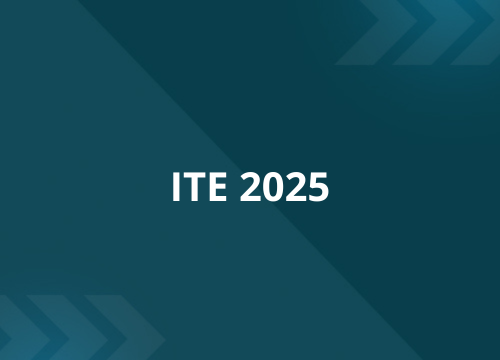
Pacifico Yokohama.
FROM Dec 03rd 2025 TO Dec 05th 2025
ITE Japan 2025
Join us at ITE Japan 2025 from 03 to 05 December and experience the forefront of advanced imaging technology!
